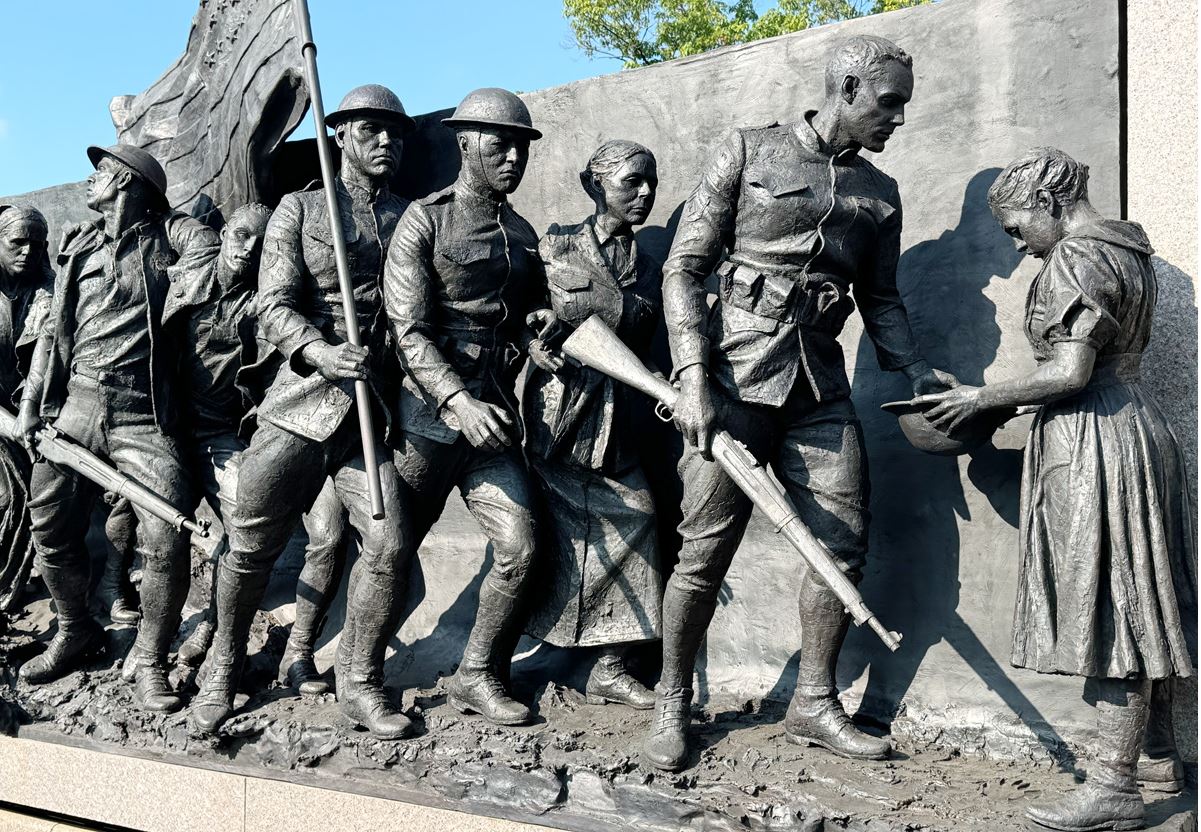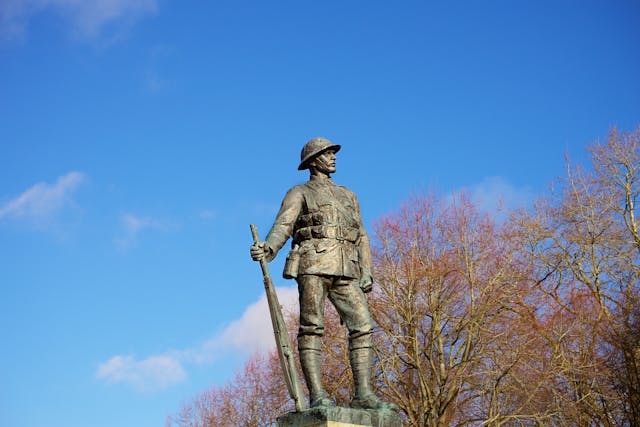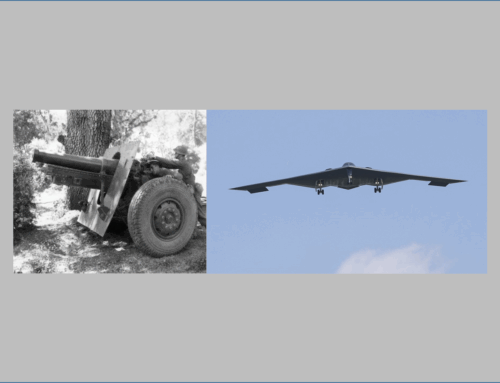How to Explore the Forgotten Battlefields and Memorials when Moving to a City with WWI History
Published: 20 March 2025
By James Calloway
Special to the Doughboy Foundation website

National WWI Memorial
The U.S. National World War I Memorial in Washington, DC
How to Explore the Forgotten Battlefields and Memorials when Moving to a City with WWI History
World War I left a lasting imprint on cities worldwide, shaping their landscapes and preserving stories of sacrifice. For those moving to a city with WWI history, exploring battlefields and memorials offers a unique way to connect with the past. Whether through well-preserved memorials or forgotten landmarks, these remnants of war provide a powerful reminder of the global conflict. This guide will help newcomers discover, respect, and engage with the history around them.
Famous Moves in US History: How War Shaped Cities and Migration
WWI not only changed the course of global politics but also influenced migration patterns in the United States. The war effort drove industrial expansion in cities, leading to significant population shifts. One of the most famous moves in the US history was the Great Migration, in which African Americans moved from the rural South to northern and midwestern cities to work in wartime industries.
Additionally, military training camps established during WWI led to the development of new communities. Cities such as Fayetteville, North Carolina, grew due to the creation of military installations like Fort Bragg. Similarly, many veterans settled in urban areas after the war, bringing economic and social changes that shaped these cities for decades. Understanding how war reshaped American cities can offer valuable context when moving to a historically significant area.
Finding Forgotten Battlefields and Memorials in Your New City
Many people associate battlefields with large, well-known locations in Europe, but some WWI-related sites exist in cities across the United States. While no direct battles took place on American soil, the war left behind recruitment centers, training grounds, and commemorative memorials.
To locate these sites, start with local historical societies and city archives. Libraries and online databases, such as those maintained by the American Battle Monuments Commission (ABMC), can also provide valuable information. Visiting historical landmarks related to WWI troop movements or war industry sites can reveal how the war influenced the region.
Walking Through History: How to Explore WWI Sites with Purpose
Visiting a WWI battlefield or memorial is more than a simple sightseeing activity; it is an opportunity to reflect on history and remember veterans. Many sites offer guided tours, which provide expert insights into the events that took place there. If you prefer independent exploration, self-guided tours with mobile apps or local guidebooks can be helpful.
When exploring these sites, it is important to remain respectful. Many memorials and cemeteries serve as final resting places for soldiers. Taking time to read the inscriptions, learn about the names etched in stone, and understand the significance of the site deepens the experience. Events such as reenactments or educational programs also offer immersive ways to engage with WWI history.
The Role of Local Communities in Preserving WWI History
Preserving history is a community effort. Across the US and in cities with deep WWI connections, historical preservation groups work to restore and maintain war-related landmarks. These groups often host commemorations, walking tours, and educational talks that bring local WWI history to life.
If you are moving to a city with WWI history, consider engaging with these efforts. Volunteering with historical organizations, attending remembrance ceremonies, or supporting local museums can help keep these stories alive. Communities that actively preserve their history offer newcomers a chance to learn about the lesser-known stories about WWI and become part of a living historical narrative.
Beyond the Battlefield: Exploring Museums, Archives, and Hidden Relics
WWI history extends beyond battlefields and cemeteries. Many cities have museums dedicated to preserving wartime artifacts, letters, and photographs. Institutions like the National WWI Museum and Memorial in Kansas City, Missouri, offer extensive exhibits covering various aspects of the war.
Local archives also house records of soldiers who trained or were stationed in the area. Researching these archives can uncover personal stories and lesser-known details about how the war shaped local communities. Additionally, remnants of WWI infrastructure—such as old armories, repurposed military buildings, and even railways used for troop transport—offer fascinating glimpses into the war’s impact on urban development.
Uncovering Personal Connections to WWI History
For many people, exploring WWI sites is more than just an educational experience—it can also be deeply personal. If you have family members who served in WWI, researching their military history can make visits to memorials and battlefields even more meaningful.
Start by looking through old family records, letters, and photographs. Many websites today offer searchable databases of military records, allowing you to trace a relative’s service history. Plenty of local historical societies and genealogy groups also have resources to help connect personal histories with significant WWI events.
If you discover that a family member trained at a specific military base, served in a particular regiment, or is honored at a memorial, visiting those locations can create a powerful connection to the past. Even if you don’t have a direct family tie, learning about soldiers from your new city and their contributions to the war can foster a sense of belonging.
By uncovering these personal connections, you can transform a move into an opportunity for historical discovery. Whether visiting a local war memorial or walking a battlefield, moving to a city with WWI history provides a chance to reflect on the individuals who shaped its past.
Honoring the Legacy: How to Keep WWI History Alive After Your Move
Moving to a new city often comes with opportunities to engage with its history. For those settling in places with WWI significance, participation in remembrance efforts ensures that the sacrifices of the past are not forgotten. Consider documenting your discoveries through photography, writing, or social media to share these important historical sites with others. Joining a historical society or attending Veterans Day and Memorial Day ceremonies can also be meaningful ways to honor those who served. As time passes, physical reminders of WWI may fade, but their stories remain relevant. By actively seeking out and supporting preservation efforts, newcomers can contribute to the ongoing mission of keeping history alive. Whether through battlefield visits, museum tours, or community engagement, moving to a city with WWI history offers a chance to walk in the footsteps of those who came before and ensure their sacrifices are never forgotten.
James Calloway is a history writer and researcher specializing in military heritage and historical preservation. Passionate about uncovering forgotten stories, he explores the impact of past wars on modern cities.
External Web Site Notice: This page contains information directly presented from an external source. The terms and conditions of this page may not be the same as those of this website. Click here to read the full disclaimer notice for external web sites. Thank you.





